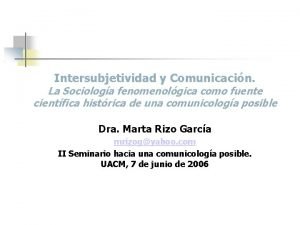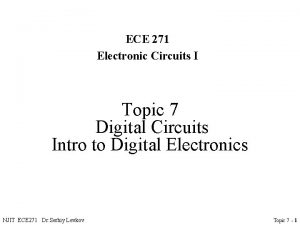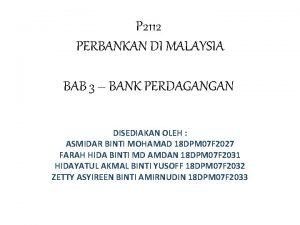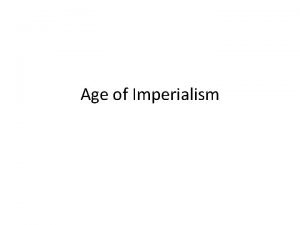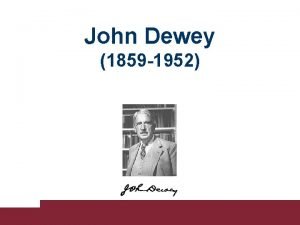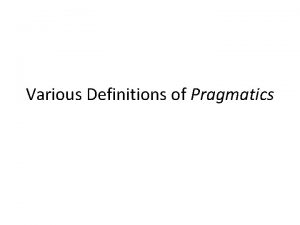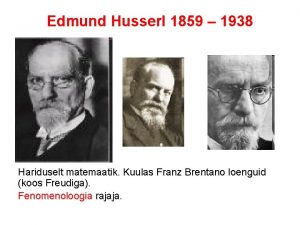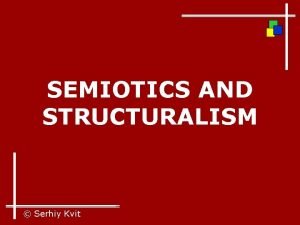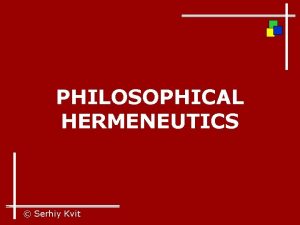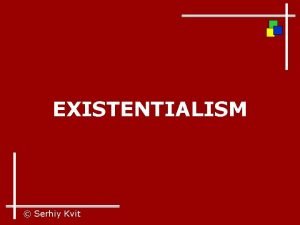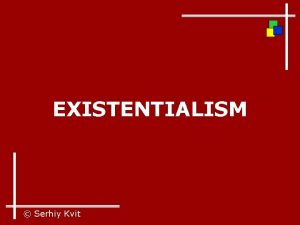PHENOMENOLOGY Serhiy Kvit Edmund Husserl 1859 1938 phenomenology












- Slides: 12

PHENOMENOLOGY © Serhiy Kvit

Edmund Husserl (1859– 1938) phenomenology

Phenomenology, according to Husserl’s concept, primarily concerns the systematic reflection and study of the structures of consciousness and phenomena that arise in the actions of consciousness. This means that phenomenology offers a subjective approach, as opposed to studying the things of the objective world that surrounds us.

Main Concepts Ø obviousness (proven and unproved) Ø reduction Ø intentionality Ø phenomenon

Pre-phenomenology Ø Ø Ø the Greeks Marcus Aurelius St. Augustine Michael Montaigne Blaise Pascal

Phenomenon For each row of things there is a corresponding phenomenon. For example, there are billions of tables, but they represent only by one phenomenon of the table as a prototype or matrix. Phenomena exist in our consciousness, and not around us in real world.

Phenomenon Phenomena are created only through the definition and description of the most important inherent traits in a certain range of things. For example, what are the hallmarks of the table? These are the surface that we use and the legs on which it stands. Color, material, size (the features of each individual table) are not important for the creating of the phenomenon.

Reduction The process of transition of a particular thing into a general phenomenon is called reduction. This is a rejection of unnecessary (not important) information about the thing. So, we move from the thing itself to its essence (the phenomenon). This is a transition from unproven obviousness (objects of surrounding world that we observe around ourselves) to the proven obviousness (the field of mathematics, logics, and phenomena).

Intentionality As a result of the reduction process, we create (put it in our mind) a phenomenon. That is possible due to intentionality, which consists of two parts: the noun (phenomenon) and the verb (process of putting) of this phenomenon.

Reduction of Mind Intentionality draws attention to the consciousness, which can perform such a function. It is about reduced mind that doesn’t belong to any particular person (with its character, tastes, individual preferences), but is the consciousness as the general ability to think.

Students and Followers of Edmund Husserl Ø Martin Heidegger Ø Hans-Georg Gadamer Ø Dmytro Chyzhevsky Ø Roman Ingarden

Task: Describe the Phenomenon of the Human (Man) Ø Which features of the human phenomenon (existence) are the most important? Ø What does it mean to be a human? Ø Can you find the common language in this case?
 Fenomenologia
Fenomenologia Fenomenología ejemplos de la vida cotidiana
Fenomenología ejemplos de la vida cotidiana Nmos inverter with resistive load
Nmos inverter with resistive load Felsefe paranteze alma
Felsefe paranteze alma Mercantile bank pulau pinang 1859
Mercantile bank pulau pinang 1859 Nasceu em paris em 1859
Nasceu em paris em 1859 Masimo 1859
Masimo 1859 Why did western nations desire lands in the pacific rim
Why did western nations desire lands in the pacific rim John dewey (1859-1952)
John dewey (1859-1952) Morris 1938 pragmatics
Morris 1938 pragmatics Kovani novac kraljevine jugoslavije 1938 vrednost
Kovani novac kraljevine jugoslavije 1938 vrednost Rebecca 1938
Rebecca 1938 1938 stroomstoten
1938 stroomstoten

